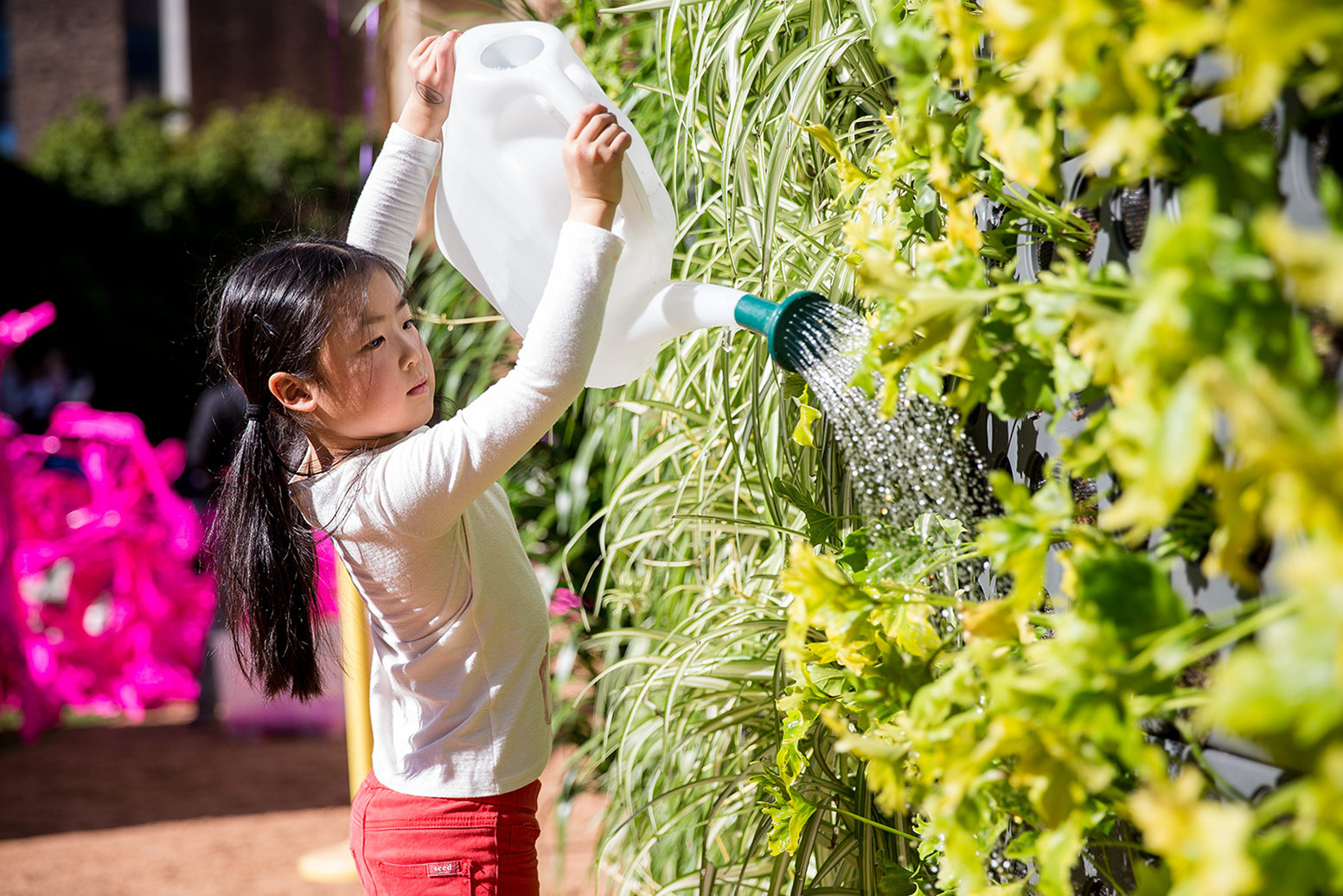The path to climate-resilient and healthy cities is paved with plants

As cities grapple with the growing challenges of climate change and public health, integrating nature and biodiversity into urban environments is crucial. Here, we reveal ten essential pillars of city-wide nature restoration.
By Camilla Siggaard Andersen and Tabitha Harvey-Crowe
Cities are often perceived as predominantly grey environments, human-built rather than natural. A century of rapid urbanisation has indeed led to the creation of vast concrete expanses, displacing previously ecologically diverse habitats and increasing the global proportion of nature-poor communities. When nature does appear in cities, it’s typically confined to parks and planters, designed more to contain than integrate non-human life.
However, urbanisation doesn’t have to equate to ecocide. Nature demonstrates this daily, sprouting from brick walls and emerging unexpectedly through asphalt, asserting its place in the urban landscape. For the sake of community health and climate resilience, we advocate to let it thrive! Cities need biodiversity to fully harness the essential services that nature can provide, whether through environmental, economic, or social benefits.
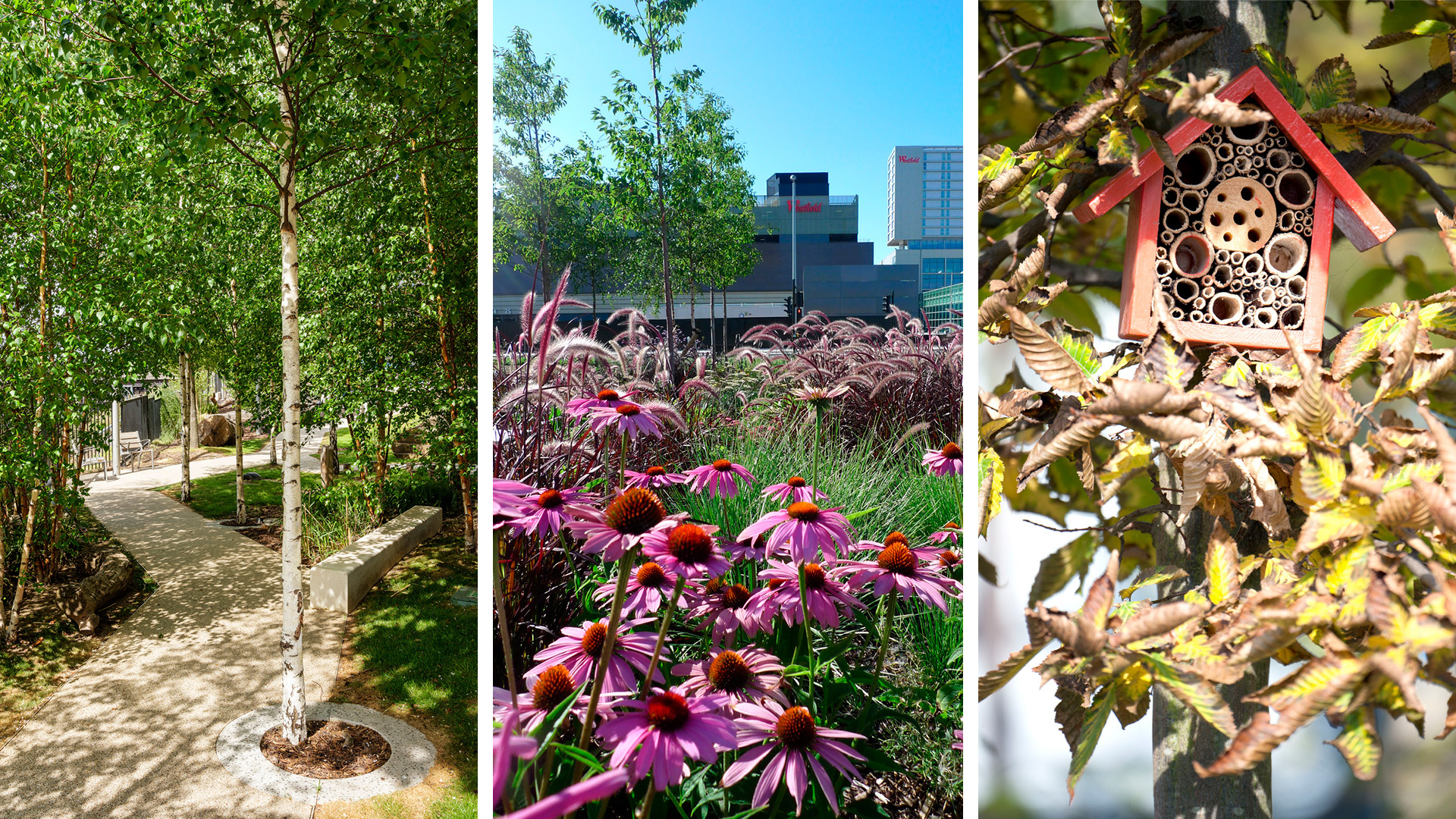
LIFE IN THE URBAN DESERT
Nature is essential for our survival, providing nutrition, clean air, and protection. Even in death, it perpetuates the cycle of life by facilitating natural decomposition. Consequently, when the urban environment is stripped of its natural ecosystems, ecological degradation and instability follow.
Urban development, like soil sealing with concrete, exacerbates this issue. According to the European Environment Agency, the total surface area of cities in the EU has increased by 78% since the mid-1950s, threatening biodiversity, increasing flood risks, and contributing to global warming.
A 2023 research paper estimated that soil is “likely home to 59% of life including everything from microbes to mammals, making it the singular most biodiverse habitat on Earth”. Losing this genetic diversity endangers food sources and human health, affecting our microbiome and immune systems.
The destruction of ecosystems also impacts urban environmental, economic, and social stability.
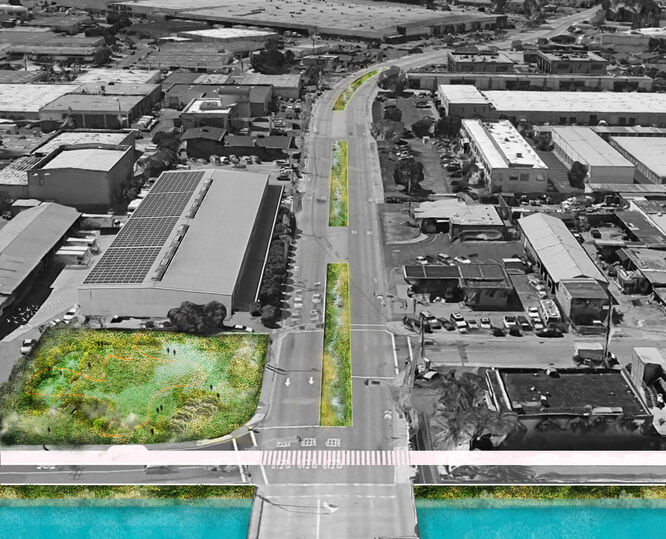

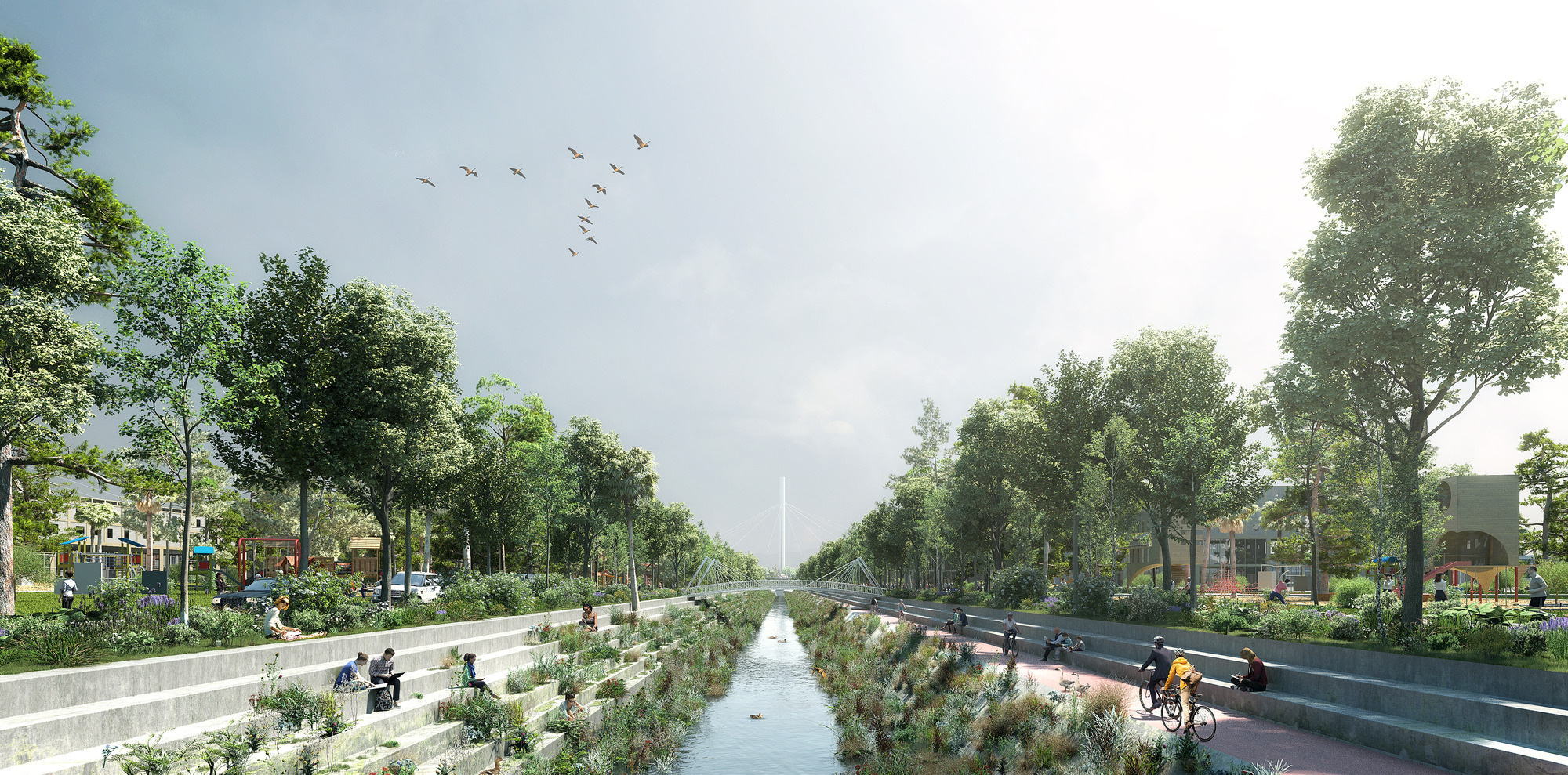
Reduced ecological complexity and loss of water-absorbing landscapes heighten urban overheating and flooding risks, leading to infrastructure failures and harming community health. The World Economic Forum predicts climate change could cause 14.5 million deaths and US$12.5 trillion in economic losses by 2050.
This future demands urgent attention. A University of Bath survey found 75% of young people fear the future, with 45% experiencing climate anxiety. Ironically, spending time in green space is a very effective way of alleviating mental health issues and inspiring climate action.
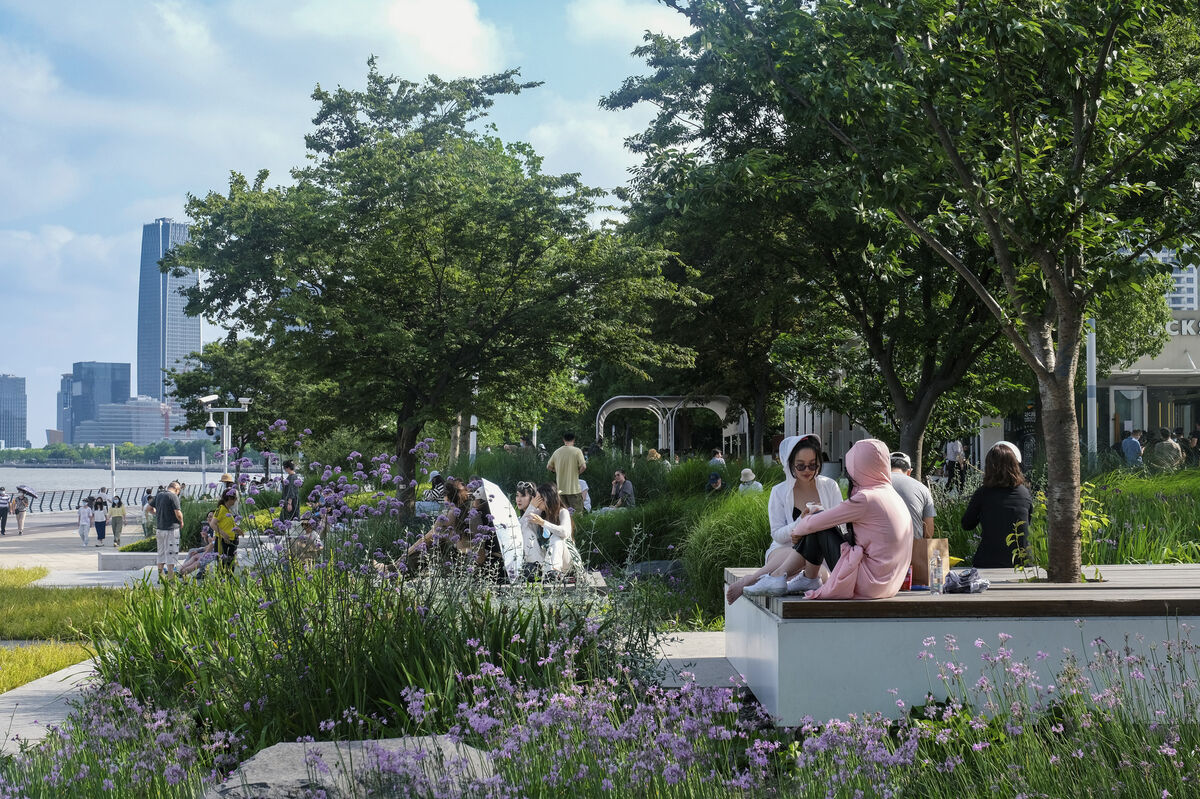
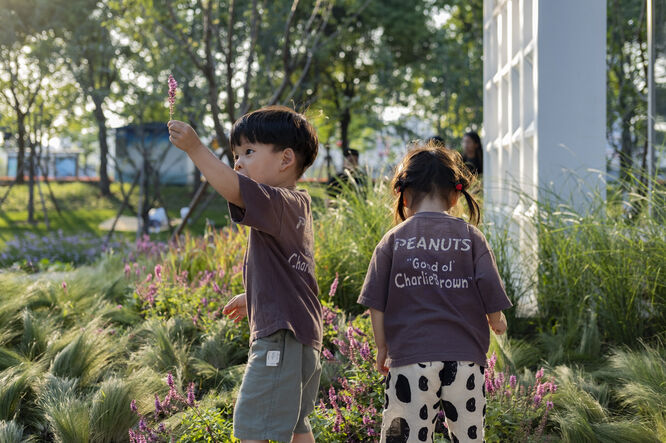
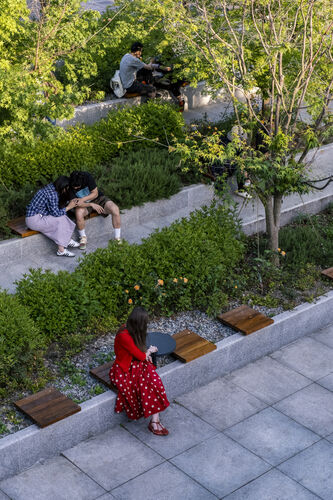
SOWING THE SEEDS FOR NATURE-BASED CITIES
Cities function best when nature is well-embedded within the urban grain. Exposure to nature in the metropolis shouldn’t be solely reliant on nature as a destination; instead, it should weave seamlessly throughout the city, acknowledging and responding to the opportunities a place provides.
Understanding the roots of a place is how we can make informed decisions about nature’s integration and decide upon what variety of green infrastructure to implement. Solutions may encompass classic street tree corridors but should also consider more creative interventions such as green roofs, pocket gardens, green walls, bioswales, rain gardens, micro forests, and permeable paving, to name a few.
These decisions about nature’s integration shouldn’t be a siloed endeavour either. Communities should be given the chance to take stewardship over natural solutions, not only fostering a sense of ownership and responsibility over the local environment, but also ensuring that the benefits of urban greening are distributed equitably and experienced effortlessly across all socio-economic groups.
Many cities are already tackling the subtle integration of flora and fauna into everyday urban experiences, introducing innovative, as well as traditional methods to foster green growth. And yet others are lagging behind, often lacking the structural mechanism required to drive urban greening initiatives.
Through our research and practice, we have identified ten common ‘nutrients’ of city-wide nature restoration for the benefit of community health and climate resilience.
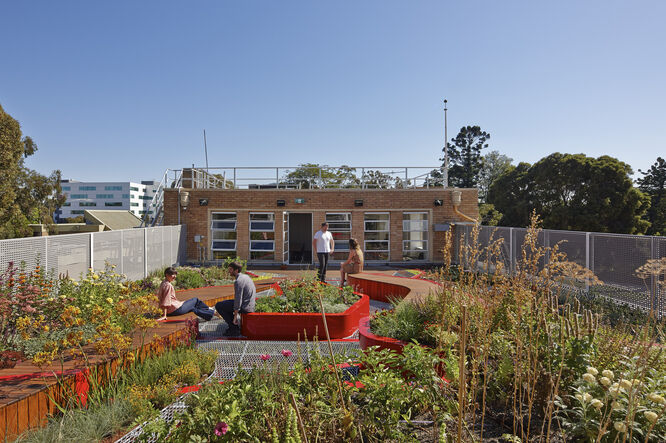
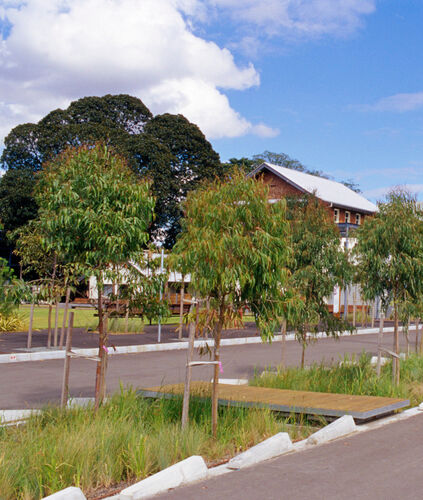
THE 10 PILLARS OF TRANSFORMATIONAL URBAN GREENING:
- Inspired, committed, and empowered leadership.
- Specific and compulsory urban greening strategies such as our new framework, Biodiversity in Place.
- Accurate and insightful data about present needs and evidence of past impacts.
- A culture that encourages cross-departmental collaboration and experimentation.
- A skilled workforce trained in nature-related fields such as ecology, horticulture, and landscape architecture.
- Strong partnerships with the private sector and large landowners.
- Genuine community engagement and co-creation as seen in our project at Colma Creek, San Francisco.
- Dedicated financial resources for planning, implementation, and maintenance.
- Effective project delivery mechanisms, including skilled contractors.
- Long-term maintenance plans and a maintenance régime that safeguards the multifaceted benefits of natural resources.
As urban designers and landscape architects, we often find the absence of any of these factors poses a critical challenge to the widespread transformation of urban deserts into the urban jungles that our urban communities desperately need.
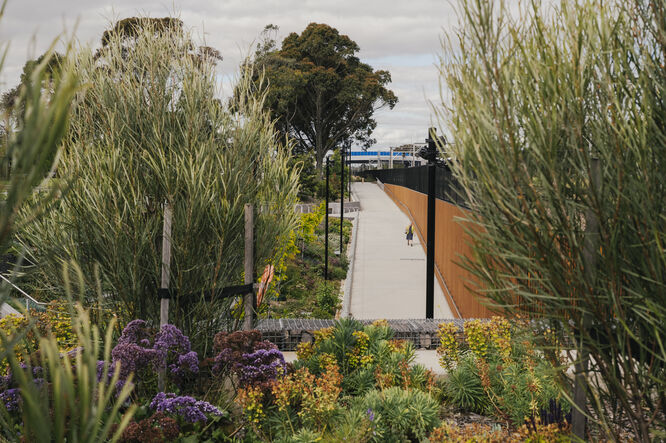

FROM URBAN DESERT TO URBAN JUNGLE
While the past century focused on taming nature for urban growth, the next must harness nature for urban health.
Cities, now mostly grey, need natural rejuvenation to heal ecological scars. Urban greening can transform these areas into resilient, sustainable, and healthy environments.
Efficiently integrating green and blue [water] spaces is crucial for tackling climate change and enhancing community wellbeing. Achieving this requires significant organisational reform in our increasingly manufactured world.
Human interventions to incorporate nature into urban areas must be led by organisations and authorities that understand, leverage, and enhance their capacity to build with, among, and for nature. Transforming urban deserts into urban jungles is not just a vision for the future but a necessary evolution towards more thriving, equitable, and green cities.
